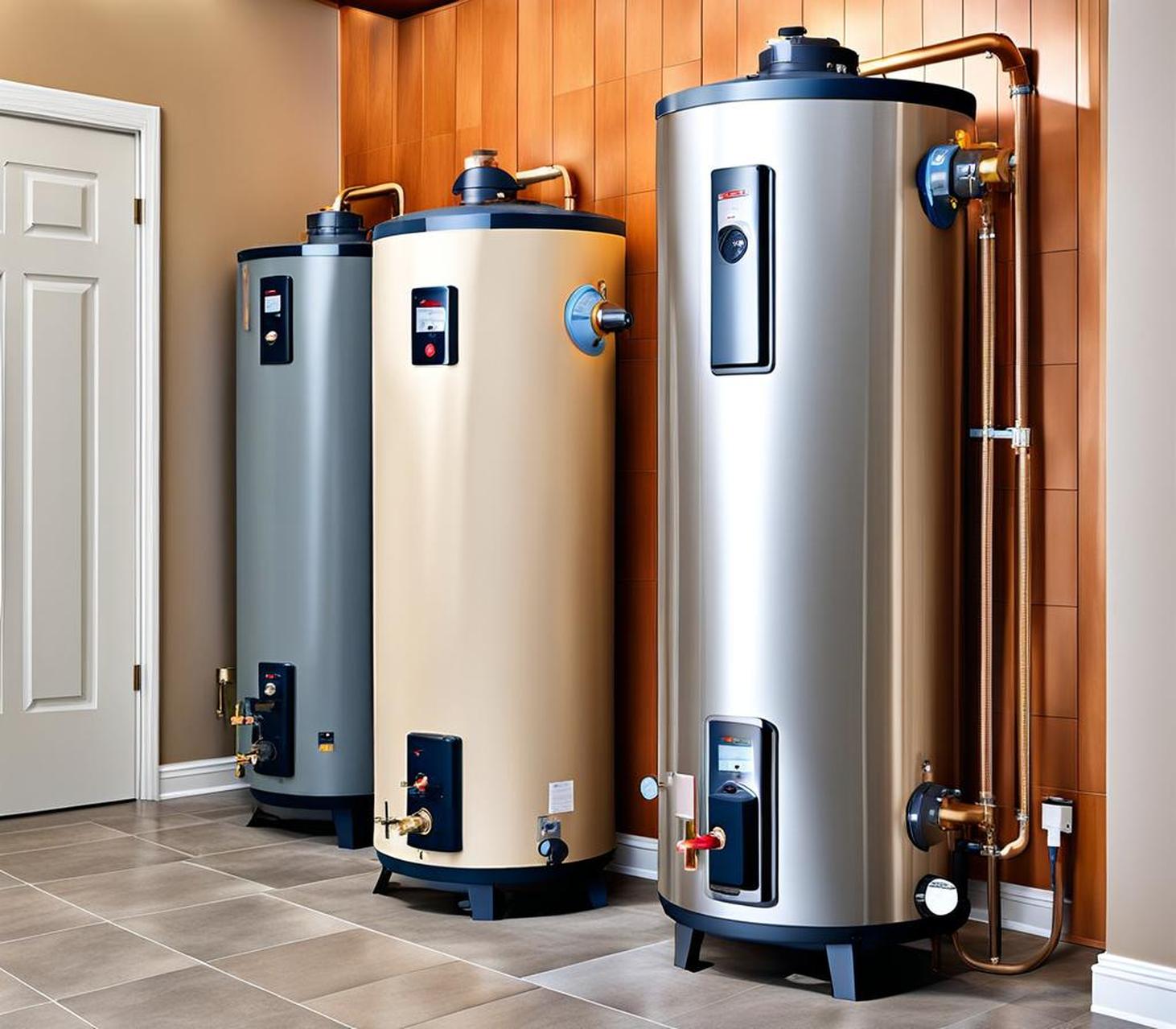Having enough hot water to meet your household’s daily needs is essential for comfortable living. But choosing the right sized water heater for your home can be confusing with all the different sizing terminology used by manufacturers.
Then we’ll walk through a simple 3-step process to calculate the perfect capacity water heater for your home.
What Affects Hot Water Demand?
When determining water heater size, the most important calculation is peak demand – the maximum amount of hot water your household could use at one time. Here are the main factors that influence this peak demand volume:
Number of People in the Household
The number of residents is the most basic indicator of hot water needs. The more people living in the home, the greater the possible simultaneous demand for hot water.

As a general guideline:
- 1-2 people = 30-40 gallons per hour
- 3-4 people = 45-65 gallons per hour
- 5+ people = 60-80 gallons per hour
Typical Shower Length and Flow Rates
Showers and baths account for up to 40% of household hot water volume. Consider factors like:
- Duration – Average showers last 8-12 minutes.
- Flow rate – Standard showerheads use 2.5 GPM, while high efficiency models may use only 1.5 GPM.
- Bathing style – Baths require more hot water than showers.
Number of Fixtures Running Simultaneously
It’s important to account for possible overlapping uses which drive up peak demand, like showering while doing laundry or running the dishwasher.
Frequency of Clothes or Dish Washing Cycles
Frequent laundry loads and dishwasher cycles, especially back-to-back, contribute to higher hot water usage.
Additional Non-Residential Water Usage
Home businesses, hobbies like home brewing, or needs like pet bathing can also factor into sizing calculations if they use significant hot water.
Calculating Peak Hot Water Demand
Once you consider all the contributors to hot water volume in your home, you can calculate an accurate peak demand using these steps:
Define Key Terms
Total Flow Rate
Total Flow Rate represents the maximum combined flow capacity from all running fixtures, measured in gallons per minute (GPM).
Peak Demand
Peak Demand defines the maximum hourly volume of hot water needed, measured in gallons per hour (GPH)
Measure Shower and Faucet Flow Rates
Using a simple container and stopwatch, measure the actual flow rate of each showerhead, faucet, and other fixture in gallons per minute. This specifies maximum possible flow rates if used at full capacity.
Track Simultaneous and Sequential Usage
Note any fixtures likely to be used at the same time – like showering and washing dishes. Also factor sequential uses over critical periods – like back-to-back dishwasher cycles or laundry loads.
Factor in Non-Shower Water Usage
Add volume contributions from clothes washers, dishwashers, sinks, pets, hobbies, etc. Measure flow rates and duration where possible.
Choosing the Right Water Heater Size
Properly sizing your water heater ensures you get the correct capacity to meet your household’s unique requirements.
Size by Hourly Hot Water Demands
Choose a water heater that meets your home’s calculated peak hourly volume needs, plus some extra reserve capacity.
Size for Peak Demands Plus Reserve
Add at least 20% extra as a reserve so your water heater can still meet unusual peak loads without running out.
Consider Efficiency and Recovery Rate
Higher efficiency units and faster heating elements allow for more hot water from less storage capacity.
Review Manufacturers’ Sizing Guides
Most brands provide detailed sizing table recommendations specific to their models’ flow rates and recovery speeds.
Confirm Needed Capacity
Use a standard worksheet calculation to convert flow measurements into clearly defined volume requirements:
Calculate Peak Flow Rate X Peak Time
Multiply measured fixture flow rates by likely simultaneous usage durations to get total gallons.
Add at Least 20% Reserve Capacity
Apply a reserve factor to account for unusual peak demands beyond normal maximums.
Compare Tank Sizes with Your Needs
With your peak demand volume calculated, cross-reference against residential water heater models with matching capacities.
Check First Hour Ratings
First hour delivery in gallons confirms storage tank capacity potential to meet short term high loads.
Verify Gallon Capacities
Storage tanks are also rated by overall size in gallons – both figures should align with your estimated requirements.
Select Appropriate Hardware
Choose the right fuel type, physical size, efficiency level, and features to match your household and budget.
Condensing vs Non-Condensing
Condensing models offer greater energy efficiency for increased energy savings.
Gas vs Electric vs Hybrid
Fuel type determines operating costs and installation requirements.
Consider Available Space
Measure installation clearances to confirm the tank will fit in your current or preferred new location.
Size Correctly for Warm Water Return
Recirculating pump systems allow distant fixtures to access hot water faster by reducing the wait required to clear out cold pipe water on demand.
Determine Pipe Run Lengths
The further hot water has to travel to reach fixtures, the greater the volume of cooler water needing to be cleared with each use.
Limit Heat Loss with Insulation
Insulating hot water lines minimizes cooling during recirculation, reducing delays and keeping more heat energy in the water.
Install Properly to Maximize Efficiency
Correct installation ensures your tank performs to its rated capacities and hot water recovery speeds.
Follow Codes and Permit Requirements
Review local regulations to confirm approved equipment and allowed configurations.
Use showerheads, faucets, and fittings rated for high flow consistency with few restrictions or leaks.
By accurately estimating your peak hot water requirements and selecting the appropriately sized water heater, you can enjoy endless hot showers and enough hot water for all your daily tasks.
